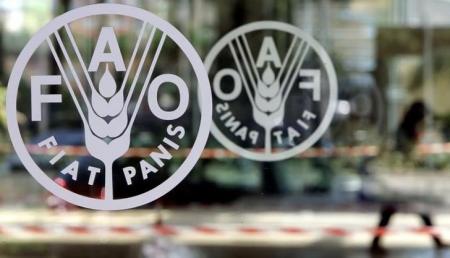Publisher: Maaal International Media Company
License: 465734
FAO: World food prices fell for 12th consecutive month during March
اقرأ المزيد
The global food price index released by the United Nations Food and Agriculture Organization (FAO) fell for the 12th consecutive month in March, down 20.5% so far from its peak a year earlier in the wake of Russia’s invasion of Ukraine.
According to Reuters, the organization said on Friday that its index, which tracks the prices of the most traded food commodities globally, averaged 126.9 points last month, compared to 129.7 points for February, this is the lowest reading since July 2021.
February’s reading was initially at 129.8.
The organization attributed this decline to factors including ample supplies, declining demand for imports, and the extension of an agreement allowing the safe export of Ukrainian grain through the Black Sea.
The Rome-based organization explained that the decline in the index reflects the decline in the prices of cereals, vegetable oils and dairy products, which compensated for the rise in the prices of sugar and meat.
“While prices have declined globally, they are still very high and continue to rise in domestic markets, which pose additional challenges to food security,” FAO Chief Economist Maximo Torero said in a statement.
“This is particularly the case in food-importing developing countries, where the situation is exacerbated by the depreciation of their currencies against the dollar or the euro and the growing debt burden,” he added.
The FAO Cereal Price Index fell 5.6 percent month-on-month in March, with wheat down 7.1 percent, maize down 4.6 percent and rice down 3.2 percent.
Vegetable oils declined by 3 percent, down about 47.7 percent from the level recorded by the index in March 2022, while the dairy index declined by 0.8 percent.
By contrast, sugar rose 1.5 percent to its highest level since October 2016, weighed down by concerns about possible production declines in India, Thailand and China. The meat price index increased by 0.8 percent
High wheat production
In a separate report on grain supply and demand, the FAO raised its forecast for global wheat production in 2023, now at 786 million tons, which is 1.3 percent less than 2022 levels, but is nonetheless the second largest ever.
“Cultivated areas are expected to approach record levels in Asia, while drought conditions affect northern Africa and southern Europe,” the organization said.
The FAO also raised its estimate for global cereal production for 2022 to 2.777 billion tonnes, down just 1.2 percent from the previous year.
It is expected that global rice production in the 2022-2023 season will reach 516 million tons, which is 1.6 percent less than the record crop for the 2021-2022 season.
The FAO estimated that global cereal consumption in 2022-2023 will reach 2.779 billion tons, down 0.7 percent from 2021-2022. Global grain stocks are expected to decline by the end of the 2022-2023 season by 0.3 percent from their levels at the beginning of the season, to 850 million tons.









